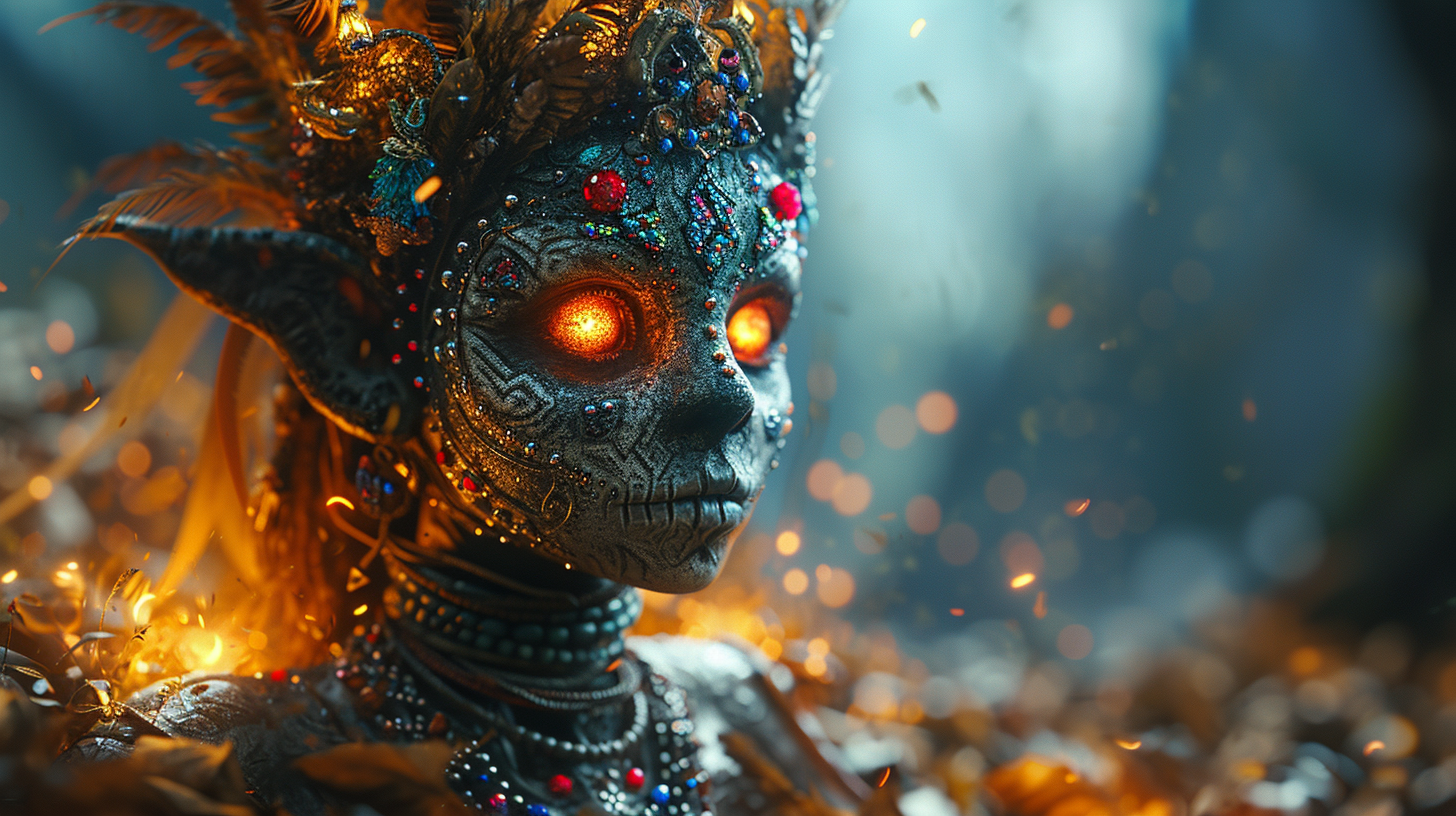Unreal Engine is a popular game engine used by many game developers to create high quality games. The latest two versions are Unreal Engine 4 (UE4) and Unreal Engine 5 (UE5). In this article, we will compare these two versions of the engine and see what the main differences are.
Introduction to Unreal Engine
Unreal Engine is a complete game development toolkit that allows developers to create high end 3D games. It handles graphics, physics, audio, animation, artificial intelligence and many other game related systems. The engine is developed by Epic Games.

Some popular games made with Unreal Engine include Fortnite, Gears of War series, BioShock series, Borderlands series and Batman: Arkham series. The engine is also used for films, architecture visualization, automotive design and training simulations.
Why Choose Unreal Engine for Game Development
Unreal Engine delivers unparalleled real-time rendering capabilities, enabling movie CG quality visuals in video games. Key features like Lumen, Nanite, and MetaSounds accelerate development and provide stunning next-gen graphical results across platforms. The accessible tools allow both technical and creative experts to collaborate effectively.
Unreal Engine 4
Unreal Engine 4 was released in 2014. It introduced many major improvements over previous versions like better graphics, physics, audio and animation systems. Some key features include:
– Physically Based Rendering (PBR) for extremely realistic graphics and lighting
– Improved particle system for high quality environmental effects like smoke, fire and magic spells
– Blueprint visual scripting system to create game logic without coding
– Revamped audio system for surround sound, occlusion and reverb effects
– Sequencer tool to create cinematic cutscenes
– VR support to create virtual reality experiences
Unreal Engine 4 games usually have very high quality 3D graphics with detailed textures and advanced lighting effects. Popular UE4 powered games include Gears 5, Dragon Ball FighterZ, Kingdom Hearts III and Mortal Kombat 11 among many others.
Unreal Engine 5
Unreal Engine 5 is the newest version, released in early access in 2021. It brings major graphics enhancements and next-gen capabilities over UE4 like:
– Lumen dynamic global illumination for fully dynamic lighting that reacts to changes
– Nanite virtualized micropolygon geometry for film quality assets and environments
– Temporal Super Resolution (TSR) upscaling for high framerates with ray tracing
– Improved physics, destruction and cloth simulation systems
Additionally, Unreal Engine 5 focuses heavily on speeding up game development workflows and making things more accessible for artists and designers via systems like MetaSounds and MetaHumans.
The most groundbreaking UE5 feature is the implementation of Lumen and Nanite. Together, they remove traditional limitations in lighting and geometry and allow artists to create cinematic quality game environments with ease.
Some upcoming Unreal Engine 5 games that take advantage of these new systems include Senua’s Saga: Hellblade II, Black Myth: Wukong and Gears of War 6.
Comparison Between Unreal 4 vs Unreal 5
Graphics

Unreal Engine 5 introduces two new core technologies – Lumen and Nanite – that revolutionize lighting and geometry in games. Lumen enables fully dynamic global illumination that automatically reacts to changes in lighting and geometry. This removes the need for pre-baked lighting and lightmap UV workflows. Nanite virtualizes geometry using micropolygons, removing polycount budgets and the need for traditional LODs. This allows film-quality source assets to be imported directly into the engine.
In contrast, Unreal Engine 4 still requires a lot of bake-based solutions for lighting and lower LODs for distant geometry. While the results can still be quite good, it requires more manual workflows compared to the automation in UE5. Unreal Engine 5 game development also introduces Temporal Super Resolution which enables much higher rendering resolutions and fidelity across all platforms.
World Building
Nanite virtualized geometry and Lumen dynamic lighting remove the need for hand-crafted LODs and lightmap UVs greatly facilitating open world creation. UE5 also introduces tools like World Partition that simplify the streaming and scaling of massive worlds. The new MetaSounds system also leverages machine learning for procedural audio generation tied to gameplay events.
UE4 requires much more manual preparation of assets before they are game-ready for an open world. Environment artists also have to spend a lot of time generating LODs and lightmaps UVs. Procedural audio solutions in UE4 rely more on designer scripting versus the automated systems in Unreal Engine 5 game development.
Materials
Unreal Engine 5 adds a complete non-PBR renderer called the “Material Layering Pipeline” allowing for stylized materials with hand-painted looks. This brings the capabilities closer to that of game art software like Substance Painter. UE5 also introduces parametric materials like glass, water and cloth that have significantly more physical accuracy than UE4’s versions of these shaders.
UE4 only has a PBR metallic/roughness workflow which requires texture tricks to achieve stylized looks. The shader models for things like water and glass are also quite simplistic requiring a lot of manual tweaking to get decent results. Destroying/shattering glass for example is not supported out of the box in Unreal engine creator 4.
Performance
A major focus in Unreal Engine 5 has been improving performance across all hardware. Temporal Super Resolution enables much higher rendering resolutions while maintaining smooth framerates. UE5 also has lower draw call and triangle rendering budgets thanks to Nanite and Lumen optimization. AMD and Intel accelerated compute features are better leveraged in UE5 as well.
While UE4 can achieve 60 FPS performance, it requires more optimization work especially for complex scenes. Unreal Engine 4 game development also lacks UE5’s upscaling and triangle culling solutions that simplify achieving higher graphics fidelity across platforms.
In summary, UE5 introduces major graphics, lighting and performance improvements while also making game development much more accessible. It removes a lot of traditional game engine limitations seen in previous generations.
Final Thoughts
Unreal Engine 5 takes a massive technological leap over Unreal Engine 4 by introducing Lumen, Nanite and other next generation features. It brings cinema quality real time graphics, completely dynamic lighting and huge improvements to performance and accessibility.
UE5 effectively removes many pain points in game art creation through virtualized geometry, global illumination and designer focused tooling. The switch from UE4 to UE5 is similar to previous generational leaps in gaming technology.
Any new projects can benefit tremendously by choosing Unreal Engine 5 over 4. Existing games can also consider porting projects over to UE5 to take advantage of all the new systems for better graphics, performance and quicker iteration speed during development. Overall UE5 marks the next generation of real time 3D experiences.
So in summary – UE5 delivers a massive leap with several groundbreaking technologies not seen before in previous game engines. It promises to push gaming and real time 3D graphics to new heights over the coming years.
eJaw Unreal Game Development Company
As a leading Unreal game development company, we provide full-cycle game development services utilizing Epic’s powerful Unreal Engine technology. With over 10 years of experience working with Unreal, our team can help you bring your game ideas to life.
Our Unreal Game Development Services
- Full-cycle game development for PC, consoles, mobile and XR platforms
- Conversion of existing games to Unreal Engine
- Ongoing live operations and support for launched Unreal titles
- Multiplayer/network programming for online games
- Unreal engine customization and plugins
- Unreal based game prototyping and vertical slices
With veteran game programmers, designers, artists and QA teams specializing in Unreal, we can efficiently develop and launch your Unreal Engine game. Contact eJaw to learn more or request a quote!








